
Succulent Care 101: Troubleshooting Brown Tips and Effective Fixes
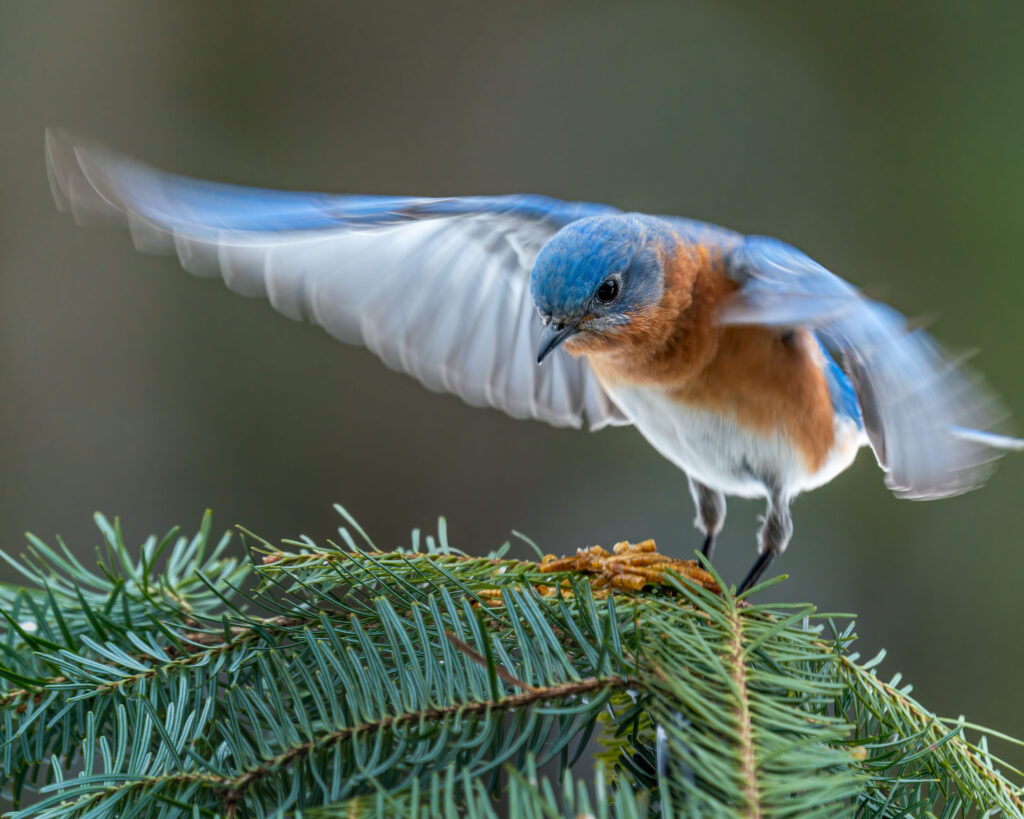
Succulents have become increasingly popular in recent years due to their unique and eye-catching appearance, as well as their reputation for being relatively low-maintenance. These plants, characterized by their thick and fleshy leaves, come in a wide variety of shapes, sizes, and colors, making them a favorite among both experienced and amateur gardeners. However, even the most well-cared-for succulents can sometimes develop brown tips on their leaves, which can be a cause for concern for many plant enthusiasts.
We will delve into the common causes of brown tips on succulent leaves and provide effective fixes to help you restore your plants' health and beauty. We will explore various factors that can contribute to this issue, including overwatering, underwatering, improper lighting, and nutrient deficiencies. Additionally, we will discuss practical tips and techniques for preventing brown tips from occurring in the first place, as well as methods for promoting overall succulent health and vitality. Whether you are a seasoned succulent lover or a beginner, this article will provide you with valuable insights and solutions to keep your succulents thriving and free of unsightly brown tips.
- Water your succulent less frequently to prevent overwatering
- Check for proper drainage in the pot to avoid waterlogged soil
- Move the succulent to a location with more sunlight to promote healthy growth
- Adjust the watering schedule based on the season and temperature
- Trim off the affected leaves or stems to prevent further spread of discoloration
- Apply a balanced succulent fertilizer to replenish nutrients in the soil
- Ensure that the succulent is planted in well-draining soil to prevent root rot
- Avoid using tap water with high levels of chlorine or fluoride, opt for filtered or distilled water instead
- Increase humidity around the succulent by placing a tray of water nearby or using a humidifier
- Avoid placing the succulent near cold drafts or extreme temperature fluctuations.
- To prevent brown tips on your succulent, reduce the amount of water you give it.
- Make sure your pot has good drainage to avoid waterlogged soil.
- Move your succulent to a sunnier location to encourage healthier growth.
- Move your succulent to a sunnier location to encourage healthier growth.
- Adjust your watering schedule based on the time of year and temperature.
- Adjust your watering schedule based on the time of year and temperature.
- Trim off any affected leaves or stems to prevent the discoloration from spreading.
- Use a balanced succulent fertilizer to replenish nutrients in the soil.
- Plant your succulent in well-draining soil to prevent root rot.
- Plant your succulent in well-draining soil to prevent root rot.
- Avoid using tap water with high levels of chlorine or fluoride; use filtered or distilled water instead.
- Increase humidity around your succulent with a tray of water or a humidifier.
- Increase humidity around your succulent with a tray of water or a humidifier.
- Keep your succulent away from cold drafts and extreme temperature changes
- Frequently Asked Questions
Water your succulent less frequently to prevent overwatering
Overwatering is one of the most common mistakes when it comes to succulent care. These plants are native to arid climates, and they have adapted to survive in dry conditions. Therefore, they do not require frequent watering like other houseplants.
If you notice brown tips on your succulent's leaves, it could be a sign of overwatering. When the roots are constantly soaked in water, they can become waterlogged and suffocate, leading to root rot. This can cause the leaves to turn brown and eventually die.
To prevent overwatering, it's essential to adjust your watering schedule. Succulents thrive in well-draining soil, so make sure your pot has drainage holes to allow excess water to escape. Additionally, always check the moisture level of the soil before watering. Stick your finger about an inch deep into the soil, and if it feels dry, it's time to water your succulent.
Remember, it's better to underwater than to overwater your succulent. These plants are more tolerant of drought than excessive moisture.
 Prevent Succulent Overgrowth: Tips for Maintaining the Perfect Size
Prevent Succulent Overgrowth: Tips for Maintaining the Perfect SizeFurthermore, consider the environmental conditions in your home. Succulents prefer bright light, but direct sunlight can be too intense and cause sunburn. Find a balance by placing them near a window with indirect sunlight or using sheer curtains to filter the light.
By adjusting your watering habits and providing the right amount of light, you can prevent brown tips on your succulent and ensure its overall health and longevity.
Check for proper drainage in the pot to avoid waterlogged soil
One common cause of brown tips on succulent leaves is waterlogged soil. Succulents are adapted to dry environments and have specialized tissues that store water. When their roots sit in wet soil for too long, it can lead to root rot and ultimately result in brown, mushy tips on the leaves.
To prevent this issue, it is crucial to ensure that your succulent's pot has proper drainage. This means that there should be holes at the bottom of the pot to allow excess water to escape. When watering your succulent, make sure not to overdo it. Only water when the soil is completely dry, and avoid leaving stagnant water in the saucer or tray beneath the pot.
If you suspect that your succulent's soil is waterlogged, it's important to take action promptly. Carefully remove the plant from the pot and inspect the roots. Trim away any soft, brown, or rotting roots using clean scissors or pruning shears. Allow the plant to dry out for a few days before repotting it in fresh, well-draining soil.
Remember, prevention is key when it comes to avoiding brown tips caused by waterlogged soil. Ensure that your succulent's pot has proper drainage and practice mindful watering habits to help your plant thrive.
 Signs of Sun Damage in Succulents: How to Identify and Prevent it
Signs of Sun Damage in Succulents: How to Identify and Prevent itMove the succulent to a location with more sunlight to promote healthy growth
One common issue that succulent owners often encounter is brown tips on their plants. If you notice brown tips on your succulent leaves, it is usually a sign of inadequate sunlight. Succulents thrive in bright, indirect light, so if your plant is not receiving enough sunlight, it can lead to the development of brown tips.
To fix this issue, you should consider moving your succulent to a location with more sunlight. Find a spot near a sunny window or place it outdoors where it can receive direct sunlight for a few hours each day. However, be cautious not to expose the succulent to intense, scorching sunlight, as this can cause sunburn and further damage the plant.
Remember to gradually acclimate your succulent to the increased sunlight to prevent shock or sunburn. Start by placing it in a partially sunny spot for a few hours each day, gradually increasing the exposure over time.
In addition to providing adequate sunlight, it is essential to ensure that your succulent is not overwatered. Overwatering can lead to root rot, which can cause browning of the tips and other parts of the plant.
If you have addressed the sunlight issue and your succulent is still experiencing brown tips, it may be a sign of inadequate watering. Underwatering can also cause the tips to turn brown.
To determine if your succulent needs water, gently press your finger into the soil about an inch deep. If it feels dry, it's time to water your plant. However, if the soil feels damp or moist, it's best to wait a little longer before watering again.
Avoid overwatering your succulent by following the "soak and dry" method. This means thoroughly watering the plant until water drains out of the bottom, then allowing the soil to dry completely before watering again.
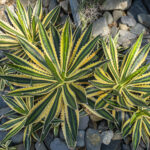 Can Split Rock Succulents Develop Wrinkles?
Can Split Rock Succulents Develop Wrinkles?If you have been following proper watering practices and your succulent still has brown tips, it may be a sign of nutrient deficiency. Succulents require essential nutrients like nitrogen, phosphorus, and potassium to thrive.
Consider using a balanced succulent fertilizer to provide your plant with the necessary nutrients. Dilute the fertilizer according to the instructions provided and apply it to the soil during the growing season.
Remember, it's always a good idea to monitor your succulent closely and make adjustments as needed. With proper care and attention, you can help your succulent regain its health and beauty.
Adjust the watering schedule based on the season and temperature
One of the most common causes of brown tips on succulent plants is overwatering. Succulents have adapted to survive in arid conditions, so they are prone to root rot if they receive too much water. To prevent this, it is important to adjust the watering schedule based on the season and temperature.
In general, succulents should be watered sparingly. During the summer months when the temperature is high and evaporation rates are faster, you may need to water your succulents more frequently. However, during the cooler months or in colder climates, succulents enter a period of dormancy and require less water.
As a general rule of thumb, wait for the soil to completely dry out between waterings. This can be easily determined by sticking your finger about an inch into the soil – if it feels dry, it's time to water. On the other hand, if the soil feels moist or damp, hold off on watering until it dries out.
 Top Low Maintenance Indoor Succulent Plants for Easy Care and Beauty
Top Low Maintenance Indoor Succulent Plants for Easy Care and BeautyRemember, it's always better to underwater than to overwater succulents. They are designed to store water in their leaves and stems, so they can tolerate periods of drought. Overwatering, on the other hand, can lead to root rot and ultimately kill the plant.
Additionally, the type of succulent you have will also determine its watering needs. Some succulents, like Aloe Vera or Jade plants, require less water compared to others. Research the specific watering requirements of your succulent species to ensure proper care.
By adjusting your watering schedule based on the season, temperature, and the specific needs of your succulents, you can prevent brown tips and promote healthy growth.
Trim off the affected leaves or stems to prevent further spread of discoloration
One common issue that succulent owners may encounter is brown tips on their plants. Brown tips can be caused by a variety of factors, including overwatering, underwatering, or exposure to extreme temperatures. If you notice brown tips on your succulent, it is important to address the issue promptly to prevent further damage to the plant.
1. Trim off the affected leaves or stems
When you notice brown tips on your succulent, the first step is to trim off the affected leaves or stems. This not only improves the overall appearance of the plant but also prevents the spread of discoloration to healthy parts. Use a pair of clean, sharp scissors or pruning shears to carefully remove the browned portions. Make sure to cut just above the healthy tissue to avoid causing additional stress to the plant.
2. Adjust your watering routine
Overwatering is a common cause of brown tips in succulents. These plants have adapted to survive in arid conditions, so they prefer well-draining soil and infrequent watering. If you suspect that overwatering is the culprit, adjust your watering routine accordingly. Allow the soil to dry out completely between waterings and ensure that the pot has drainage holes to prevent water from accumulating.
On the other hand, underwatering can also lead to brown tips. If the soil is extremely dry and the succulent appears shriveled, it may be a sign that it needs more water. However, be careful not to overcompensate and overwater the plant.
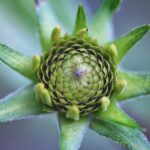 Can You Mist Succulents Every Day? What You Need to Know
Can You Mist Succulents Every Day? What You Need to Know3. Provide adequate sunlight
Succulents thrive in bright, indirect sunlight. Insufficient light can stress the plant and cause browning of the tips. Ensure that your succulent is placed near a window or in a well-lit area. If natural light is limited, you can supplement with artificial grow lights to provide the necessary light intensity.
4. Check for signs of pests or diseases
Some pests, such as mealybugs or mites, can cause damage to succulents, leading to brown tips. Inspect your plant carefully for any signs of infestation, such as webbing, tiny crawling insects, or sticky residue. If you identify any pests, treat the plant with an appropriate insecticide or try natural remedies like neem oil or a mixture of water and dish soap.
In addition, certain diseases, such as fungal infections, can also cause browning of succulent tips. If you suspect a disease is affecting your plant, it is best to consult a plant professional or horticulturist for proper diagnosis and treatment.
5. Maintain optimal temperature and humidity
Succulents are adapted to thrive in warm and dry environments. Exposure to extreme temperatures or high humidity levels can cause stress and result in brown tips. Avoid placing your succulent near drafty windows, heating vents, or air conditioning units. Additionally, ensure good air circulation around the plant to prevent excessive humidity.
By following these troubleshooting tips and providing the necessary care, you can effectively address brown tips on your succulents and keep them looking healthy and vibrant.
Apply a balanced succulent fertilizer to replenish nutrients in the soil
One common issue that many succulent owners face is the appearance of brown tips on their plants. This can be a sign of nutrient deficiency in the soil. In order to combat this problem, it is important to apply a balanced succulent fertilizer to replenish the nutrients in the soil.
Succulents are known for their ability to thrive in low-nutrient environments, but they still require some essential nutrients to stay healthy. A balanced succulent fertilizer contains a mix of nitrogen, phosphorus, and potassium, along with other trace elements that are essential for plant growth.
 Epsom Salt for Succulent Plants: A Complete Guide
Epsom Salt for Succulent Plants: A Complete GuideWhen applying the fertilizer, it is important to follow the instructions on the packaging. Generally, it is recommended to dilute the fertilizer with water to avoid over-fertilizing the plants. Over-fertilization can lead to root burn and other issues, so it is crucial to use the right amount.
One effective way to apply the fertilizer is by using the "soak and dry" method. This involves thoroughly watering the soil until it is completely saturated, and then allowing it to dry out before watering again. Adding the fertilizer to the water during the watering process ensures that it reaches the roots and provides the necessary nutrients.
It is important to note that succulents have different nutritional needs during different seasons. During the active growing season, which is typically spring and summer, succulents require more nutrients. As the growth slows down during fall and winter, it is advisable to reduce the frequency of fertilizer application to avoid overfeeding the plants.
In addition to providing the necessary nutrients, the balanced succulent fertilizer also helps in improving the overall health and appearance of the plants. It promotes vibrant foliage, enhances root development, and increases the plant's ability to resist diseases and pests.
By regularly applying a balanced succulent fertilizer, you can help prevent brown tips and ensure that your succulents stay healthy and thriving.
Ensure that the succulent is planted in well-draining soil to prevent root rot
One of the most common causes of brown tips on succulent leaves is root rot, which occurs when the roots are constantly sitting in waterlogged soil. To prevent this issue, it is crucial to ensure that your succulent is planted in well-draining soil.
 Is It Normal for My Succulent to Have an Unusual Growth?
Is It Normal for My Succulent to Have an Unusual Growth?Well-draining soil allows excess water to pass through, preventing it from getting trapped around the roots. You can either purchase a pre-made succulent mix or create your own by combining regular potting soil with perlite or coarse sand.
When repotting your succulent, make sure to choose a pot with drainage holes at the bottom. This will allow any excess water to escape, further reducing the risk of root rot.
Additionally, be mindful of your watering habits. Succulents generally prefer to be watered thoroughly but infrequently. Wait until the soil is completely dry before watering again, and make sure to pour off any excess water that collects in the saucer or tray beneath the pot.
Effective Fixes:
- Remove affected leaves: If you notice brown tips on your succulent's leaves, it is best to remove them. Use a clean pair of scissors or pruning shears to carefully trim off the damaged parts. This will not only improve the appearance of the plant but also prevent any potential spread of rot.
- Adjust watering frequency: If root rot persists despite using well-draining soil, you may need to adjust your watering schedule. Experiment with watering less frequently to allow the roots to dry out between waterings. Remember, it's better to underwater than overwater succulents.
- Check for pests: Sometimes, brown tips can be a sign of pest infestation. Inspect your succulent closely for any signs of pests, such as mealybugs or spider mites. If you find any, treat the plant with an appropriate insecticide or try natural remedies like neem oil or a mixture of water and dish soap.
By ensuring proper drainage and making necessary adjustments to watering and pest control, you can effectively troubleshoot and fix brown tips on your succulent leaves.
Avoid using tap water with high levels of chlorine or fluoride, opt for filtered or distilled water instead
When it comes to caring for your succulents, one common issue that many plant enthusiasts face is the appearance of brown tips on the leaves. While succulents are known for their low maintenance and ability to thrive in dry conditions, brown tips can be a sign of various underlying problems. One of the first things to consider is the type of water you are using to irrigate your plants.
 Can Succulents Die from Overwatering and Lack of Sunlight?
Can Succulents Die from Overwatering and Lack of Sunlight?Avoid using tap water with high levels of chlorine or fluoride
Tap water often contains high levels of chlorine and fluoride, which can be detrimental to the health of your succulents. These chemicals can cause leaf burn, leading to brown tips and overall damage to the plant. To prevent this, it is recommended to opt for filtered or distilled water instead.
Filtered water
Using filtered water is a great alternative to tap water. It helps to remove impurities such as chlorine and fluoride, ensuring a healthier environment for your succulents. You can easily obtain filtered water by using a water filter pitcher or a faucet attachment that filters out harmful substances.
Distilled water
Another option is to use distilled water for your succulents. Distilled water is free from impurities and minerals, making it a safe choice for watering your plants. You can find distilled water at most grocery stores or even make your own by using a home distillation kit.
By using filtered or distilled water, you can minimize the risk of brown tips on your succulents and provide them with the clean, pure water they need to thrive.
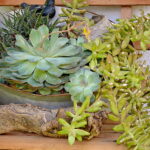 Trimming Succulents: Can I Safely Prune the Top of an Overgrown Plant?
Trimming Succulents: Can I Safely Prune the Top of an Overgrown Plant?Increase humidity around the succulent by placing a tray of water nearby or using a humidifier
Humidity plays a crucial role in the overall health of succulents. Succulents are native to arid regions and are adapted to survive in low humidity environments. However, if the humidity level drops too low, it can lead to brown tips and other issues.
One effective way to increase humidity around your succulent is by placing a tray of water near it. As the water evaporates, it will create moisture in the air, providing a more humid environment for your plant. Make sure to use a tray with a wide surface area, as this will maximize the amount of water exposed to the air.
Another option is to use a humidifier. A humidifier is a device that releases water vapor into the air, increasing the humidity level in the room. This can be particularly useful if you have multiple succulents or a larger collection that requires more consistent humidity.
When using a humidifier, it's important to monitor the humidity levels to ensure they do not become too high. Succulents prefer humidity levels between 30-50%. Excessive moisture can lead to rot and fungal diseases, so it's crucial to find the right balance.
If you notice your succulent's leaves are turning brown and crispy at the tips, increasing the humidity may help alleviate the issue. Remember to observe your plant closely and adjust the humidity accordingly to find the optimal conditions for your succulent's health.
Avoid placing the succulent near cold drafts or extreme temperature fluctuations.
 Can Succulents Survive a Freeze Unprotected?
Can Succulents Survive a Freeze Unprotected?When it comes to caring for your succulents, one of the most common issues you may encounter is brown tips on the leaves. This can be a sign of various problems, but luckily, there are effective fixes to help restore your succulent's health.
1. Check for Overwatering
Overwatering is a common cause of brown tips on succulents. These plants are adapted to survive in arid conditions and have thick leaves that store water. If you notice brown tips on your succulent, it may be a sign that you're watering it too frequently. To fix this issue, allow the soil to dry out completely between waterings. Additionally, make sure your succulent is planted in well-draining soil to prevent waterlogged roots.
2. Assess Lighting Conditions
Succulents thrive in bright, indirect light. If your succulent is not receiving enough light, it may develop brown tips. On the other hand, too much direct sunlight can also cause leaf burn and browning. Find a balance by placing your succulent near a window with filtered light or providing it with artificial grow lights. Adjust the positioning of your succulent until you find the optimal lighting conditions.
3. Avoid Cold Drafts and Temperature Fluctuations
Succulents are sensitive to temperature changes, especially cold drafts. Placing your succulent near windows or doors where drafts occur can lead to brown tips. Similarly, exposing your succulent to extreme temperature fluctuations can have a similar effect. To prevent this, keep your succulent in a stable temperature environment, away from cold drafts or heat sources like radiators.
4. Evaluate Humidity Levels
Succulents prefer low humidity environments, and high humidity can contribute to brown tips. If you live in a humid climate or have your succulent in a bathroom or kitchen, consider using a dehumidifier or placing a tray of water-absorbent stones near the plant to absorb excess moisture from the air.
5. Trim Brown Tips
If your succulent already has brown tips, you can trim them using a pair of clean, sterilized scissors or shears. Make sure to cut the damaged portion of the leaf without harming the healthy parts. This will not only improve the appearance of your succulent but also promote new growth.
By following these troubleshooting tips and implementing the appropriate fixes, you can effectively address brown tips on your succulent and ensure its overall health and vitality.
To prevent brown tips on your succulent, reduce the amount of water you give it.
One of the common problems that succulent owners face is the development of brown tips on their plants. This can be quite disheartening, especially if you've put effort into growing and maintaining your succulent. However, there are ways to troubleshoot and fix this issue effectively.
1. Evaluate the watering routine
One of the main causes of brown tips on succulents is overwatering. Succulents have adapted to survive in arid conditions and store water in their leaves and stems. Therefore, they don't require frequent watering like other houseplants. Overwatering can lead to root rot, which affects the health of the plant and causes brown tips to appear.
To prevent brown tips, reduce the frequency of watering. A good rule of thumb is to wait until the soil is completely dry before watering again. Succulents prefer a thorough soak followed by a period of dryness to mimic their natural environment.
2. Check the drainage
Poor drainage can also contribute to the development of brown tips. Succulents need well-draining soil to prevent excess moisture from sitting around the roots. If the soil doesn't drain properly, the roots can become waterlogged, leading to root rot and brown tips.
Ensure that your succulent is planted in a pot with drainage holes. If you have a decorative pot without drainage, consider using a plastic nursery pot with drainage and placing it inside the decorative pot. This will allow excess water to escape and prevent waterlogging.
3. Adjust lighting conditions
Insufficient or excessive light can also cause brown tips on succulents. These plants thrive in bright, indirect light. If your succulent is not receiving enough light, it may stretch and become weak, leading to brown tips. On the other hand, too much direct sunlight can scorch the leaves, causing them to turn brown.
Find a suitable spot for your succulent where it can receive bright, indirect light for a few hours a day. If you notice signs of sunburn, such as brown spots or patches, move the plant to a location with filtered light or provide some shade during the hottest part of the day.
4. Maintain appropriate humidity levels
Succulents thrive in low humidity environments, and high humidity can lead to problems like fungal diseases and brown tips. If you live in a humid climate, it's essential to create a drier microclimate around your succulent.
You can achieve this by providing good air circulation, avoiding misting the leaves, and keeping the plant away from sources of excess moisture, such as humidifiers or bathrooms.
Conclusion:
By following these troubleshooting tips and making necessary adjustments, you can prevent and fix brown tips on your succulent. Remember to water sparingly, ensure proper drainage, provide adequate light, and maintain suitable humidity levels. With a little care and attention, your succulent will flourish and remain vibrant, free from brown tips.
Make sure your pot has good drainage to avoid waterlogged soil.
One common problem that succulent owners encounter is brown tips on their plants. This can be a sign of overwatering or poor drainage, leading to waterlogged soil. To prevent this issue, it is crucial to ensure that your pot has good drainage.
When selecting a pot for your succulent, opt for one with drainage holes at the bottom. These holes allow excess water to escape, preventing the roots from sitting in water for extended periods. If your pot doesn't have drainage holes, you can create them yourself by using a drill or adding a layer of pebbles at the bottom to facilitate water drainage.
Remember, succulents are adapted to arid conditions and thrive in well-draining soil. When the soil remains consistently moist, it can lead to root rot and cause browning at the tips of the leaves.
Furthermore, it's essential to choose the right soil mix for your succulent. A well-draining soil mix typically consists of a combination of potting soil, sand, and perlite. This mixture allows water to flow freely through the soil, preventing waterlogging and root issues.
By ensuring proper drainage and using the right soil mix, you can effectively avoid brown tips on your succulents and promote their overall health and growth.
Move your succulent to a sunnier location to encourage healthier growth.
Move your succulent to a sunnier location to encourage healthier growth.
If you have noticed brown tips on your succulent leaves, it could be a sign of inadequate sunlight. Succulents thrive in bright, indirect light, so if your plant is not receiving enough light, it may develop brown tips.
To fix this issue, consider moving your succulent to a sunnier location. Find a spot near a south-facing window or outside where it can receive at least six hours of sunlight per day. Be mindful of intense midday sun, as it can scorch the leaves. Gradually acclimate your succulent to the new light conditions to prevent shock.
Remember that different succulent varieties have varying light requirements. Some succulents, like Echeveria or Haworthia, prefer bright, indirect light, while others, like Agave or Sedum, can tolerate more direct sunlight. Research the specific needs of your succulent to ensure it is getting the right amount of light.
If moving your succulent to a sunnier location is not possible, you can supplement its light needs with artificial grow lights. LED grow lights are a popular choice as they provide the right spectrum of light for succulent growth without generating excessive heat.
Adjust your watering schedule based on the time of year and temperature.
Adjust your watering schedule based on the time of year and temperature.
One of the most common causes of brown tips on succulent plants is improper watering. As succulents are adapted to survive in arid conditions, they have unique water requirements that differ from other houseplants. To maintain healthy succulents and prevent brown tips, it is essential to adjust your watering schedule based on the time of year and temperature.
1. Understanding the water needs of succulents
Succulents have specialized leaves and stems that store water, allowing them to survive in dry environments. These plants are adapted to periods of drought, and overwatering can lead to root rot and subsequent brown tips. It is crucial to understand that succulents prefer to be slightly underwatered than overwatered.
2. Factors to consider when watering succulents
When determining the watering frequency for your succulents, consider the following factors:
- Time of year: Succulents have different water requirements during different seasons. In the summer, when temperatures are higher and the sunlight is more intense, succulents may need more frequent watering. In contrast, during the winter months, succulents enter a dormant period and require less water.
- Temperature: Hotter temperatures increase the rate of evaporation, causing the soil to dry out faster. It is essential to adjust your watering schedule accordingly to prevent the soil from becoming too dry and leading to brown tips.
- Soil type: Well-draining soil is crucial for succulents. Using a specialized succulent or cactus mix, which contains a higher proportion of sand or perlite, allows excess water to drain quickly, reducing the risk of root rot.
3. Watering techniques to prevent brown tips
Here are some effective watering techniques to help prevent brown tips on your succulents:
- Soak and dry method: This method involves thoroughly watering the soil until water drains out of the pot's drainage holes. Allow the soil to dry out completely before watering again. This technique mimics the natural cycle of rainfall in succulents' native habitats.
- Water from the bottom: Placing your succulent pot in a shallow dish filled with water and allowing the plant to absorb water from the bottom can prevent overwatering and promote healthy root growth.
- Use a moisture meter: A moisture meter can help you accurately determine when it's time to water your succulents. Insert the probe into the soil, and if the reading indicates dryness, it's time to water.
By adjusting your watering schedule based on the time of year, temperature, and using proper watering techniques, you can effectively prevent brown tips on your succulent plants and maintain their overall health.
Trim off any affected leaves or stems to prevent the discoloration from spreading.
When it comes to caring for succulents, one common issue that many plant owners encounter is the development of brown tips on the leaves or stems. These brown tips can be unsightly and may indicate an underlying problem that needs to be addressed. In this article, we will explore the causes of brown tips on succulents and provide effective fixes to help your plants thrive.
Causes of Brown Tips on Succulents
There are several factors that can contribute to the development of brown tips on succulents. Understanding these causes will help you identify the problem and take appropriate action to resolve it.
- Overwatering: Succulents are desert plants that store water in their leaves and stems. Overwatering can lead to root rot, which in turn causes the tips of the plant to turn brown.
- Underwatering: On the other hand, underwatering can cause succulents to become dehydrated, resulting in brown, shriveled tips.
- Improper drainage: Succulents require well-draining soil to prevent waterlogged roots. If the soil doesn't drain properly, excess moisture can accumulate, leading to brown tips.
- Excessive sunlight: While succulents thrive in bright light, too much direct sunlight can scorch their leaves, causing brown tips.
- Low humidity: Succulents prefer dry environments, so high humidity can cause moisture to build up on the leaves, leading to browning.
- Nutrient deficiencies: In some cases, brown tips can be a sign of nutrient deficiencies, such as a lack of nitrogen or iron in the soil.
Effective Fixes for Brown Tips on Succulents
If you notice brown tips on your succulents, don't panic. There are several effective fixes that can help rejuvenate your plants and restore their vibrant appearance.
- Adjust watering: Assess the moisture levels in the soil and adjust your watering routine accordingly. Succulents generally prefer to dry out between waterings, so make sure the soil is dry before watering again.
- Improve drainage: Ensure that your succulents are planted in well-draining soil and use pots with drainage holes. This will prevent excess moisture from causing root rot and browning.
- Provide adequate sunlight: Place your succulents in a location where they receive bright, indirect sunlight. If you notice signs of sunburn, gradually acclimate them to more intense light conditions.
- Monitor humidity: Succulents thrive in low humidity environments, so avoid placing them in areas with high moisture levels. If necessary, use a dehumidifier or move them to a drier location.
- Fertilize appropriately: If nutrient deficiencies are suspected, consider using a balanced succulent fertilizer to provide the necessary nutrients. Follow the instructions on the fertilizer packaging for best results.
By addressing the causes and implementing these effective fixes, you can prevent and resolve brown tips on your succulents. Remember, each succulent may have specific care requirements, so it's essential to observe and adjust your care routine accordingly. With proper attention and care, your succulents will thrive and continue to beautify your space.
Use a balanced succulent fertilizer to replenish nutrients in the soil.
Why is balanced succulent fertilizer important?
Succulents are known for their ability to thrive in harsh conditions, but they still require proper care to stay healthy. One essential aspect of succulent care is providing them with the right nutrients. A balanced succulent fertilizer is important because it provides a well-rounded supply of essential nutrients that these plants need to grow and thrive.
What causes brown tips on succulents?
Brown tips on succulents can be a common problem, but they can be indicative of underlying issues. Some common causes of brown tips include:
- Overwatering: Excessive watering can lead to root rot, causing the tips to turn brown.
- Underwatering: Lack of sufficient water can cause the plant to become dehydrated, resulting in browning of the tips.
- Too much direct sunlight: Succulents love sunlight, but excessive exposure to intense sunlight can cause the tips to burn and turn brown.
- Improper soil drainage: If the soil doesn't drain well, it can lead to waterlogged roots, which can result in brown tips.
Effective fixes for brown tips on succulents
If you notice brown tips on your succulents, don't worry! There are several effective fixes you can try:
- Adjust watering: Make sure you are watering your succulents properly by allowing the soil to dry out between watering sessions. Avoid overwatering or underwatering.
- Provide adequate sunlight: Find a balance between providing enough sunlight for your succulents to thrive without exposing them to excessive direct sunlight.
- Improve soil drainage: Ensure that your succulents are planted in well-draining soil or add perlite or sand to improve drainage.
- Trim affected leaves: If the brown tips are limited to a few leaves, you can carefully trim them using clean scissors or pruning shears.
- Apply balanced succulent fertilizer: To replenish nutrients in the soil, apply a balanced succulent fertilizer according to the package instructions. This will help your succulents regain their health and prevent further browning of the tips.
Remember, succulent care is all about finding the right balance of water, sunlight, and nutrients. By following these troubleshooting tips and effective fixes, you'll be well on your way to keeping your succulents healthy and vibrant!
Plant your succulent in well-draining soil to prevent root rot.
Plant your succulent in well-draining soil to prevent root rot.
Succulents are known for their ability to survive in arid conditions, but they can still experience issues if not properly cared for. One common problem that succulent owners encounter is brown tips on their plants. These brown tips can be an indication of various issues, including overwatering, underwatering, or even a nutrient deficiency.
To prevent brown tips and ensure the health of your succulent, it is crucial to plant it in well-draining soil. Succulents thrive in soil that allows excess water to drain out quickly, preventing the roots from sitting in water and potentially rotting.
When choosing soil for your succulent, opt for a mix specifically formulated for succulents and cacti. These mixes usually contain a combination of organic material, sand, and perlite, which promote proper drainage. Avoid using regular potting soil, as it retains moisture for longer periods, increasing the risk of root rot.
When repotting your succulent, use a pot with drainage holes to further aid in water drainage. This will help prevent water from pooling at the bottom of the pot, which can lead to root rot and brown tips.
Additionally, be mindful of your watering routine. Succulents generally prefer infrequent but deep watering. Wait for the soil to dry out completely before watering again. Overwatering can lead to root rot and brown tips, while underwatering can cause dehydration and stress.
Remember to water your succulent thoroughly, allowing the water to reach the roots, but avoid leaving it in standing water. After watering, discard any excess water that collects in the saucer or tray beneath the pot.
Lastly, ensure your succulent receives adequate sunlight. Most succulents require bright, indirect light to thrive. Placing them near a sunny window or providing them with artificial grow lights can help promote healthy growth and prevent issues such as etiolation, which can also contribute to brown tips.
By planting your succulent in well-draining soil, maintaining a proper watering routine, and providing adequate sunlight, you can prevent brown tips and keep your succulent thriving.
Avoid using tap water with high levels of chlorine or fluoride; use filtered or distilled water instead.
One common issue that succulent owners encounter is brown tips on their plants. This can be concerning, as it may indicate a problem with the health of the succulent. Fortunately, there are several effective fixes that can help address this issue.
1. Water quality
The water you use to hydrate your succulents can play a significant role in preventing brown tips. Avoid using tap water with high levels of chlorine or fluoride, as these chemicals can be harmful to the plants. Instead, opt for filtered or distilled water, which will provide your succulents with the necessary hydration without any potentially harmful additives.
2. Watering technique
Overwatering is a common mistake that can lead to brown tips on succulents. These plants have adapted to survive in arid conditions and do not require frequent watering. It is crucial to water your succulents sparingly and allow the soil to dry out completely between waterings. This will prevent the roots from becoming waterlogged and promote healthy growth.
3. Sunlight exposure
Succulents thrive in bright, indirect sunlight. However, excessive exposure to intense sunlight can cause their leaves to burn and develop brown tips. To prevent this, ensure that your succulents are placed in an area with filtered or diffused sunlight, especially during the hottest parts of the day. If you notice signs of sunburn, gradually acclimate your plants to higher light levels to avoid further damage.
4. Soil quality
The type of soil you use for your succulents can also impact their overall health. It is essential to use well-draining soil specifically formulated for succulents and cacti. This type of soil allows excess water to flow out easily, preventing waterlogged roots and the development of brown tips. You can also add perlite or sand to improve drainage if needed.
5. Fertilizer use
While succulents do not require frequent fertilization, providing them with a balanced succulent fertilizer during the growing season can promote healthy growth. However, overusing fertilizer or using a fertilizer with high nitrogen content can cause leaf burn and brown tips. Always follow the instructions on the fertilizer packaging and dilute it properly to avoid any adverse effects.
By following these troubleshooting tips and implementing the appropriate fixes, you can prevent and address brown tips on your succulents effectively. Remember, understanding the specific needs of your succulents and providing them with the right care will help ensure their longevity and vibrant appearance.
Increase humidity around your succulent with a tray of water or a humidifier.
Increase humidity around your succulent with a tray of water or a humidifier.
One common issue that succulent owners may encounter is brown tips on their plants. This can be a sign of various problems, such as underwatering, sunburn, or low humidity. In this section, we will discuss how to troubleshoot brown tips and provide effective fixes to keep your succulents healthy and thriving.
1. Assess your watering routine
One of the main reasons succulents develop brown tips is due to underwatering. Succulents have unique water requirements, as they store moisture in their leaves and stems. If you notice brown tips on your succulent, it may be an indication that you are not providing enough water.
To fix this issue, reevaluate your watering routine. Ensure that you are watering your succulent deeply enough, allowing the water to reach the roots. A general guideline is to water your succulent when the soil is completely dry. However, be careful not to overwater, as this can lead to root rot and other problems.
2. Increase humidity
Low humidity levels can also cause brown tips on succulents. These plants are naturally adapted to arid environments with low humidity, so they can struggle in overly dry conditions.
To increase humidity around your succulent, you can try placing a tray of water near the plant. As the water evaporates, it will create a more humid microclimate. Another option is to use a humidifier to maintain a consistent level of humidity in the air. Both methods can help prevent brown tips and promote healthier growth.
3. Adjust lighting conditions
Excessive exposure to direct sunlight can result in sunburned succulents, leading to brown or scorched tips. If your succulent is placed in a spot with intense sunlight for extended periods, it may be the cause of the browning.
To fix this issue, consider moving your succulent to a location with indirect or filtered sunlight. If you are growing your succulent indoors, ensure it is placed near a window that receives bright, indirect light. Outdoor succulents can benefit from some shade during the hottest parts of the day.
4. Check for pests or diseases
Sometimes, brown tips can be a sign of pests or diseases affecting your succulent. Inspect the plant carefully to check for any signs of infestation or infection, such as mealybugs, scale insects, or fungal growth.
If you identify any pests or diseases, take appropriate measures to treat the issue. This may involve using insecticidal soap, neem oil, or other organic treatments to eliminate pests. For fungal infections, you may need to remove the affected parts and treat the plant with a fungicide.
By following these troubleshooting tips and implementing the necessary fixes, you can address the issue of brown tips on your succulents and ensure they thrive in a healthy environment.
Keep your succulent away from cold drafts and extreme temperature changes
Succulents are known for their ability to thrive in harsh conditions, but even they have their limits. One common issue that succulent owners face is the occurrence of brown tips on their plants. If you notice your succulent's leaves turning brown at the edges, it's time to troubleshoot and find an effective fix.
Why do succulent leaves get brown tips?
One of the most common reasons for brown tips on succulent leaves is exposure to cold drafts or extreme temperature changes. Succulents are native to arid regions and are adapted to thrive in warm and dry environments. When exposed to cold drafts or sudden temperature fluctuations, succulents can experience stress, leading to the development of brown tips.
How to keep your succulent away from cold drafts and extreme temperature changes?
Here are a few tips to help you protect your succulent from cold drafts and extreme temperature changes:
- Find the right location: Place your succulent in an area where it can receive bright, indirect sunlight. Avoid placing it near windows or doors where cold drafts are more likely to occur.
- Provide insulation: If your succulent is located near a window or door, consider using an insulating material such as bubble wrap or a window insulation kit to shield it from cold drafts.
- Monitor temperatures: Keep an eye on the temperature fluctuations in your home or office. If you notice drastic changes, consider moving your succulent to a more stable location.
- Avoid placing near heating or cooling vents: Direct exposure to hot or cold air from vents can also cause stress to your succulent. Keep it away from these sources to prevent temperature-related issues.
What to do if your succulent already has brown tips?
If your succulent already has brown tips, don't worry, there are steps you can take to help it recover:
- Trim the affected leaves: Use clean and sharp scissors or pruning shears to carefully remove the brown-tipped leaves. Make sure to sanitize your tools before and after use to prevent the spread of any potential diseases.
- Adjust watering habits: Overwatering can contribute to succulent stress and the development of brown tips. Make sure you are allowing the soil to dry out completely between waterings and adjust your watering schedule accordingly.
- Improve air circulation: Proper air circulation can help prevent moisture buildup, which can also contribute to succulent stress. Ensure that your succulent has enough space around it for air to circulate freely.
- Provide optimal lighting: Ensure your succulent is getting the right amount of light. Too much or too little light can stress the plant, leading to further issues. Adjust its location accordingly to provide the ideal lighting conditions.
By following these tips and making the necessary adjustments, you can help your succulent recover from brown tips and keep it healthy and thriving.
Frequently Asked Questions
1. Why are the tips of my succulent turning brown?
Brown tips on succulents are usually a sign of underwatering or salt buildup in the soil. Ensure you are watering your succulent adequately and flush the soil occasionally to prevent salt buildup.
2. How often should I water my succulent to prevent brown tips?
Succulents should be watered thoroughly but infrequently. Water them when the top inch of soil feels dry, usually every 1-2 weeks depending on environmental conditions and the specific succulent species.
3. Can I save my succulent if the tips have already turned brown?
If only the tips are brown, you can trim them off with clean, sharp scissors or shears. Ensure the cut is straight and avoid damaging the healthy parts of the plant. With proper care, the succulent should recover.
4. What other factors can cause brown tips on succulents?
Other factors that can contribute to brown tips include excessive sunlight exposure, nutrient deficiencies, and temperature extremes. Ensure your succulent is receiving the right amount of light, nutrients, and temperature for its specific needs.
If you want to read more articles similar to Succulent Care 101: Troubleshooting Brown Tips and Effective Fixes, you can visit the Care and Maintenance category.

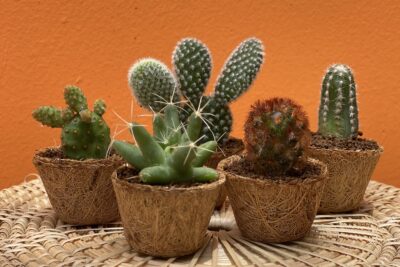
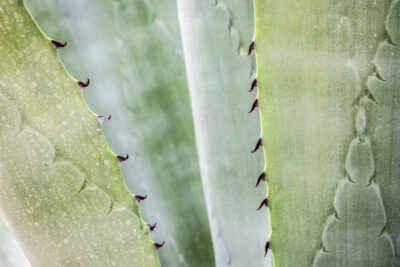



You Must Read